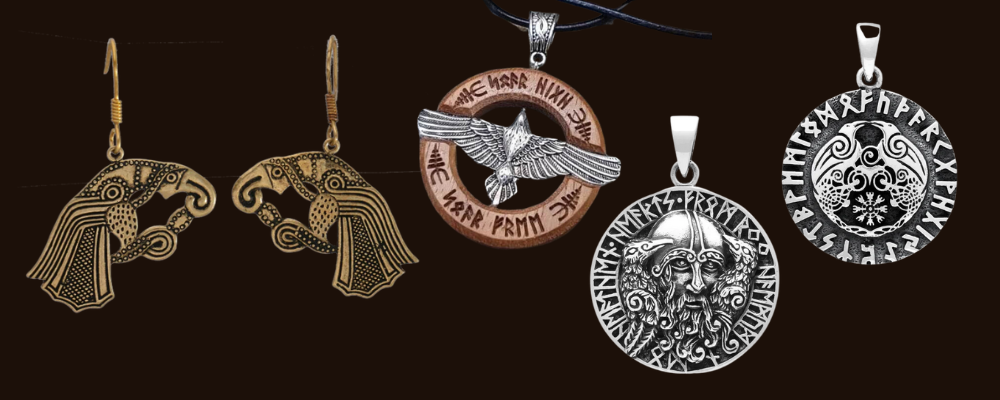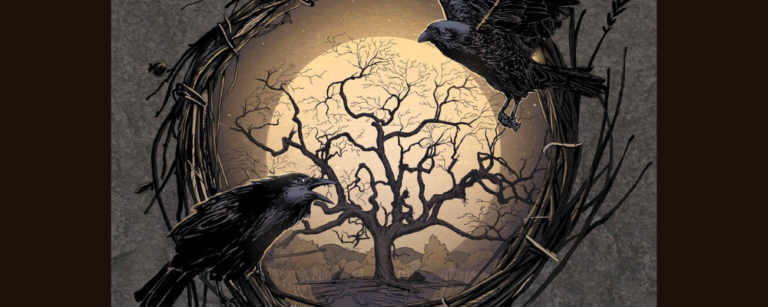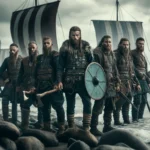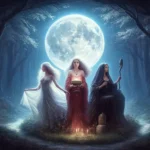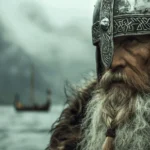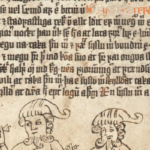Huginn and Muninn are the famous pair of ravens from Norse mythology. They are the familiars of Odin, and their names mean “thought” and “memory”. But what do we know about what the Vikings thought about this pair of birds? And what does this tell us about Odin and the Viking concept of the soul?

Ancient Attribute of Odin
The Norse gods and their mythology evolved over time. It is apparent that Tyr was the chief Norse god at some point before he was supplanted by Odin, and that Frigg and Freyja were considered the same goddess at some point before the Viking era.
Consequently, it is always interesting to understand when certain attributes became associated with the gods.
The link between Odin and ravens appears to be old, as there is evidence of him being associated with the bird in pre-Viking times.
A sixth-century gold bracteate from Denmark depicts a warrior with a spear, identified as Odin carrying his famous enchanted spear Gungnir. He is flanked by two ravens who fly near his ears.
A seventh-century plate from Sweden shows Odin on his horse carrying his spear with two ravens flying nearby. Odin and ravens are common themes in Norse art throughout the Viking period.
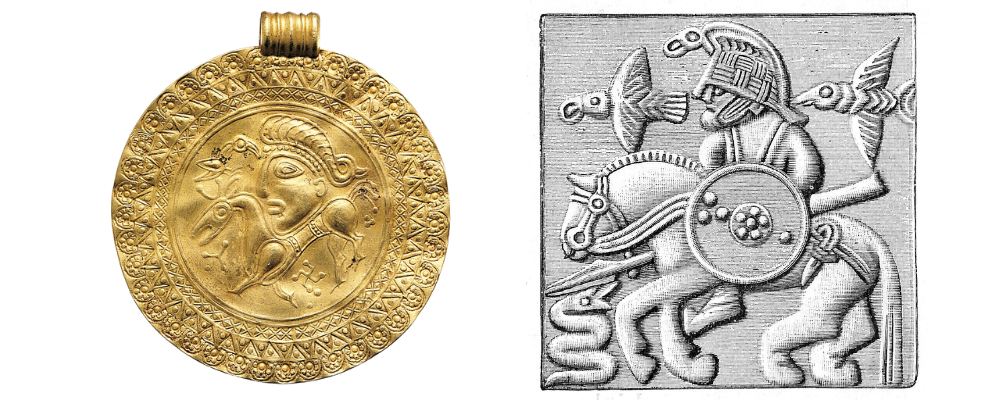
Huginn and Muninn in the Norse Sources
The pair of ravens are mentioned several times in the surviving Norse sources and are our main source of information about Huginn and Muninn.
They say that Odin had two personal ravens, Huginn and Muninn, who would fly out into the worlds of the Norse cosmos every day at dawn. They would act as the eyes and ears of the god and would tell him everything they had seen when they returned at dusk.
According to the Heimskringla, Odin gave the ravens the ability to speak so that they could report back to him. The Third Grammatical Treatise says that Odin was often called Hrafnagud, or raven god, and that the pair sit on his shoulders.
In the Poetic Edda, Odin, disguised as Grimnir, tells the young prince Agnarr about the familiars of Odin in Norse mythology. He first tells him about the two wolves that accompany Odin everywhere he goes, Geri and Freki, and then about Huginn and Muninn, describing their daily travel across Midgard. The god also expresses the fear he feels each day that the birds will not return to his side.
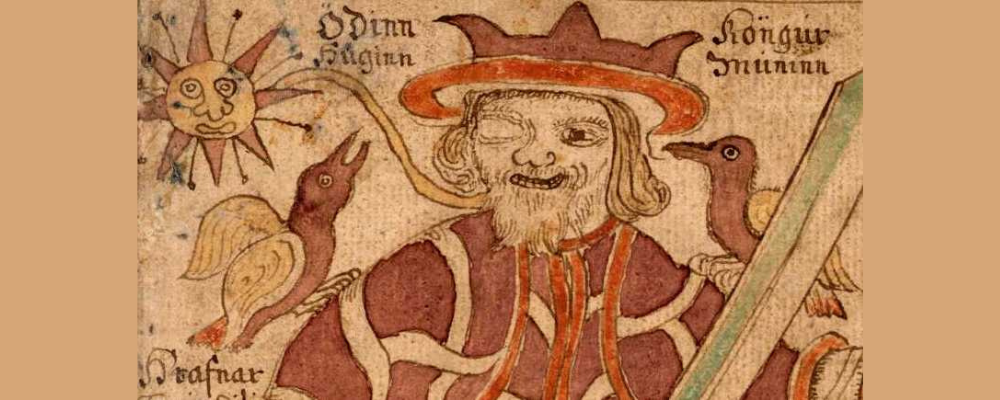
Ravens, War, and Sacrifice
Among his varied characteristics, Odin was the god of war, and ravens are intimately linked with war.
Interestingly, Ragnar Lothbrok is said to have fought under a banner embossed with a raven. If the raven flapped in the wind, it was a sure sign that Ragnar would win. If it hung in the air, it was a bad omen for the Viking forces. Considering Lothrbok’s actions in England, it may be telling that the Old English word for raven, hraefn, was often used as a kenning for bloodshed and death.
Ravens are carrion birds, so it is not uncommon for them to circle battlefields to feed on the dead. It is very likely that the Vikings considered this a sign that Odin was present. This mattered because the Vikings believed that Odin, with the help of his Valkyries, chose the bravest fallen warriors to live in Valhalla. This is Odin’s great hall in Asgard. There the warriors feast and boast until they are called on to fight again alongside the gods at Ragnarok.
In some surviving Skaldic poems, Huginn and Muninn are described as flying to men who had been hanged. This was a ritual death to dedicate their souls to Odin, in imitation of the way that Odin hung himself from Yggdrasil for nine days and nine nights while pierced by his own spear to learn the secrets of the runes.
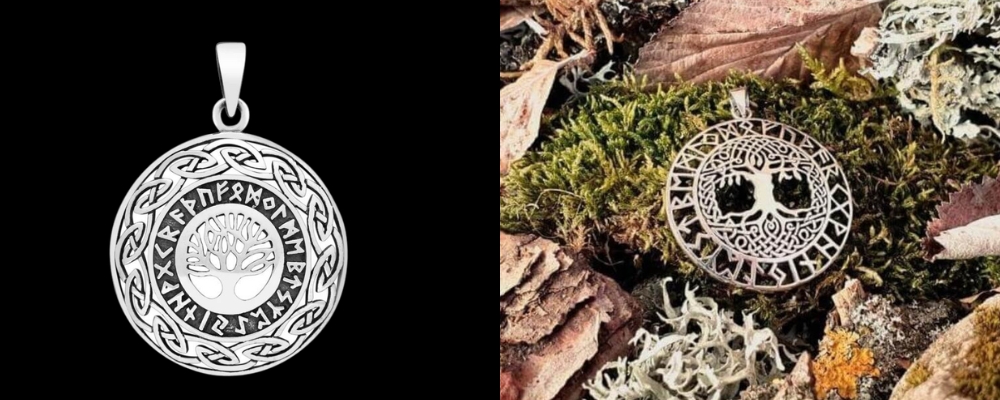
Odin is sometimes referred to as the priest of raven sacrifice, and warriors as the feeders of ravens and the fatteners of the battle starlings. It was also believed that if ravens showed up shortly after a sacrifice to Odin, then the raven god had accepted the sacrifice.
The Viking age Osberg burial from Norway includes a tapestry that shows two ravens flying over a cart, presumed to hold a cult image of Odin. This confirms the link between ravens and the worship of Odin.
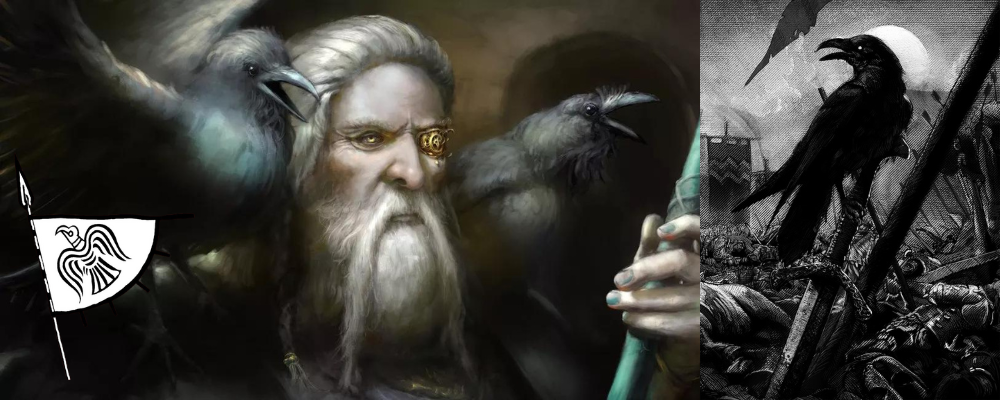
Birds of Wisdom
While ravens are considered carrion and vicious, they are also considered wise animals. This makes them a good match for Odin, who in addition to being the god of war, is also the god of wisdom.
Huginn and Muninn travel out into the world to collect knowledge for Odin. This is despite Odin having a throne in Asgard called Hildskjalf, which lets him look out over all of existence. Perhaps this does not represent inconsistency, but rather two different cultural traditions explaining how Odin knows what is happening in the world.
Odin would often leave Asgard to wander the world disguised as an old man. Ravens are often described as accompanying him on his journeys.
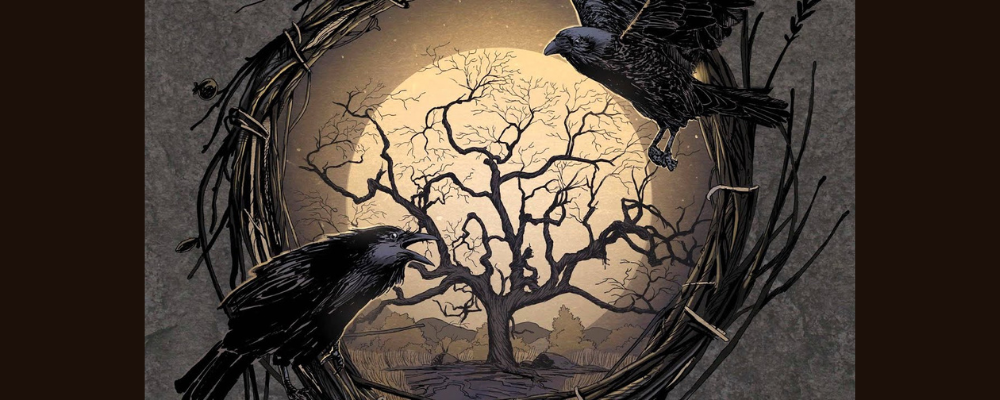
Black Birds and Seidr Magic
Odin was considered a master of magic. This includes the magic of the runes and Seidr magic. While he was not a seer himself, he is also often seen in conversation with prophets. Some scholars suggest that the ravens were linked with Odin’s practice of the shamanic arts.
It is also interesting that Volva, Viking witches and practitioners of Seidr magic, were thought to be able to both shapeshift into animals and to astral project through the spiritual realm to see what is happening elsewhere in the world.
It is possible that this is what Odin did with Huginn and Muninn. Rather than representing physical birds, they may be aspects of his mind, “thought and memory”, that he sent out to fly through the world like ravens in a form of astral projection. This would explain why he was so concerned that they would return and make him whole again.
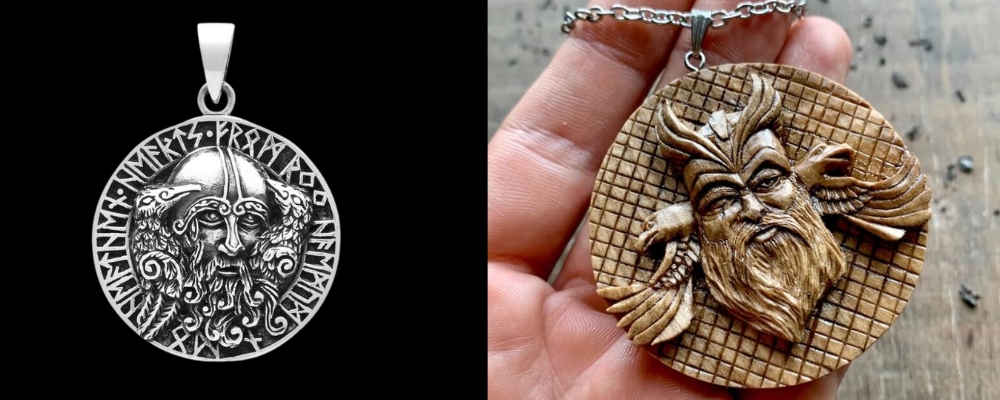
This aligns with Norse concepts of the soul, which was very different from the Christian soul. In fact, the Old Norse word for soul, sal, was only invented after the Vikings began to convert to Christianity.
Instead, they believed that the essence of a person contained four parts.
The Hamr is the “shape” or “skin” of the person and represents their physical form as it is perceived by others. But this is not static, and it can be changed through skipa homum, or shape-shifting.
The Hugr is “thought”, and it is the word that the name Huginn derives from. While the Hugr normally stayed with the person, those with a strong Hugr could have a significant effect on others just by thinking about them, kind of like giving them the evil eye.
The Fylgja is the “follower” and kind of spiritual companion. The well-being of the Fylgja and the individual are inextricably intertwined and if the Fylgja dies, so does the individual. They would often travel ahead of their owner and scout out what was to come.
The Hamingja is a person’s “luck”, but this is a personality trait. You can be born with good luck or the favor of the gods. This also is not unique to an individual. When a person dies, their Hamingja could pass to new family members.
The Norse idea of the soul seems to reflect the Norse idea of magic. It is by harnessing and utilizing that magic workers can achieve things such as shapeshifting, visions, and lending support to those in need. This was an art that Odin mastered, and perhaps Huginn and Muninn are an aspect of that power.
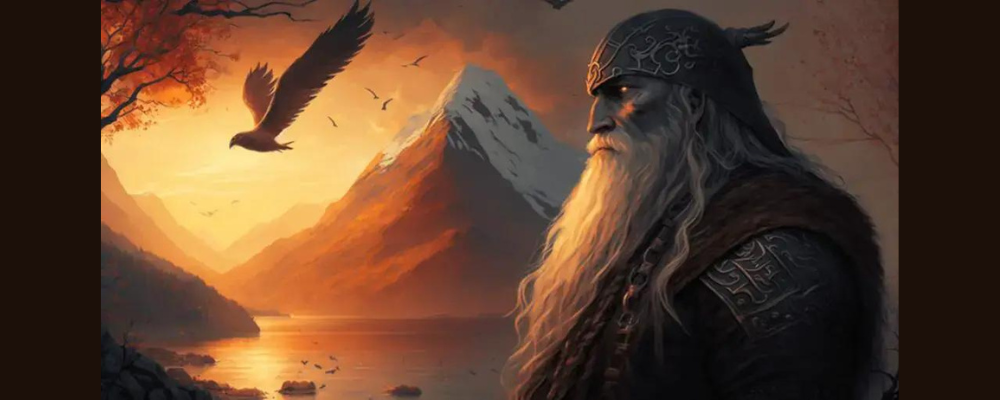
Mysterious Marras
In Old English, the word Marra refers to a companion or the counterpart or twin of another thing. This seems like a fitting description for Huginn and Muninn. While the sources mention the birds often, demonstrating their importance, they give very little away about their true nature. Much of what we guess about the birds is a matter of conjecture and filling in the blanks.
The pair of ravens are popular symbols among modern Vikings, and you can find many pieces inspired by ravens Odin’s in the VKNG collection.
